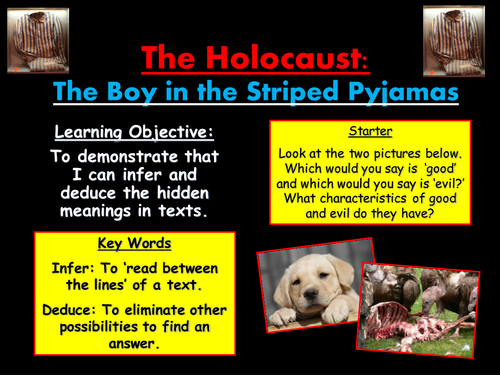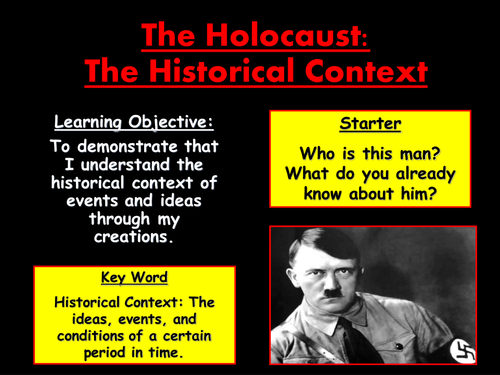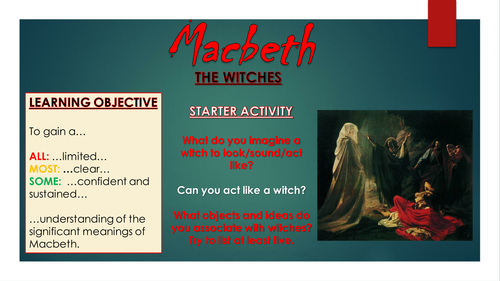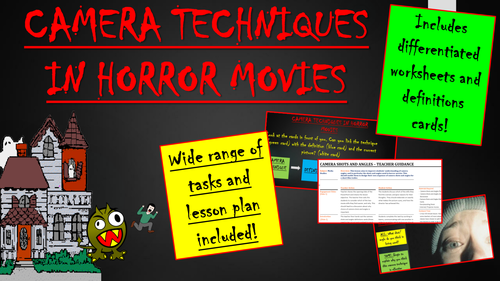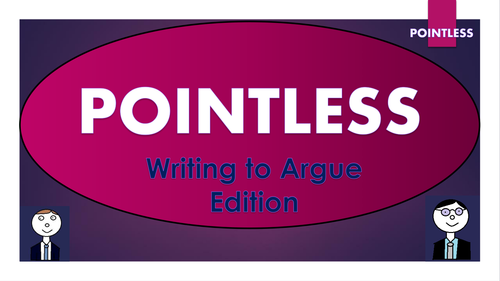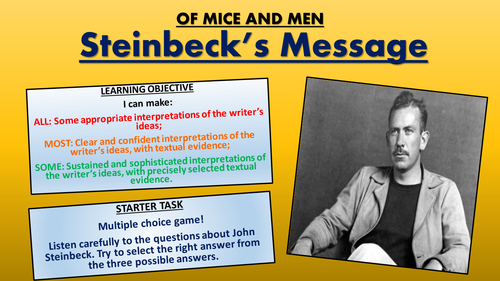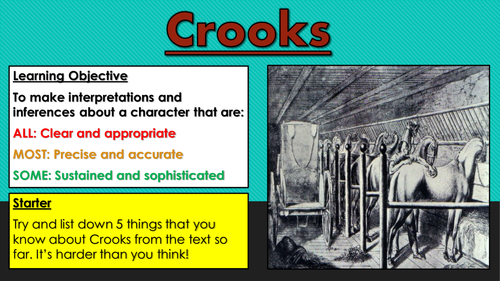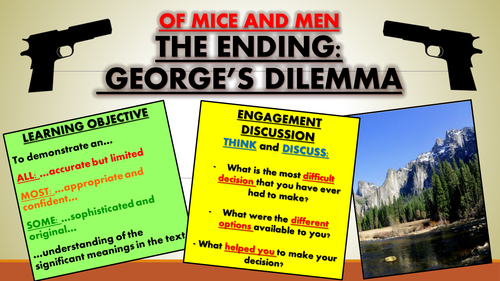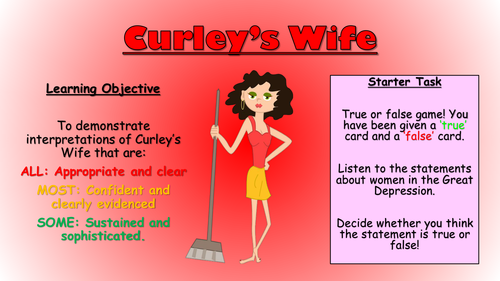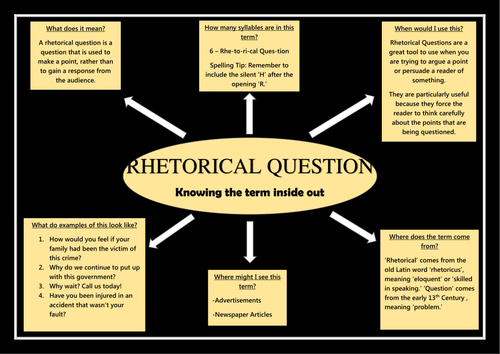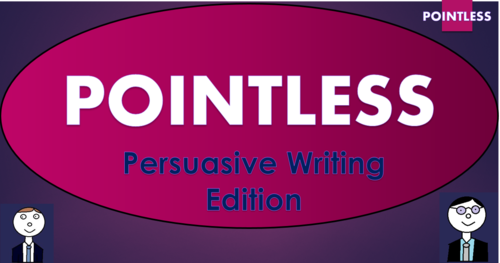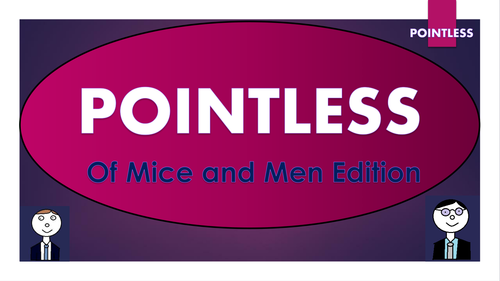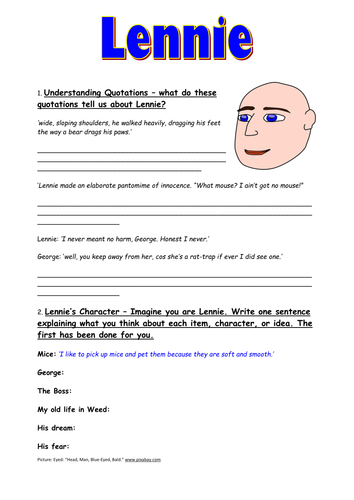
3k+Uploads
1967k+Views
2278k+Downloads
All resources

The Holocaust: Schindler's List
This lesson aims to help students to write descriptively, using a range of descriptive writing techniques. Students also learn how to incorporate the five senses into their writing. Furthermore, students explore social and moral issues such as 'swimming against the tide' and 'being different,' through the story of Oskar Schindler.
Informative and engaging, this lesson follows a clear and logical learning journey. Students learn to:
- Define the key term 'humane'
- Understand the story of Oskar Schindler, and consider the social and moral dilemmas that he faced;
- Consider decisions that they have had to make which contrast to popular opinion;
- Remember the five senses, and discuss why they are important to descriptive writing;
- Use the five senses to create descriptive sentences based on scenes from Schindler's List;
- Write a descriptive piece about a difficult decision that they have had to make;
- Peer-assess each others' learning attempts.
Resources included are: A whole-lesson PowerPoint, that guides the teacher and learners throughout the entire lesson, an engaging worksheet, a writing to describe help-sheet, and a teacher guidance sheet.
Note: I'm aware that this is a 15 film - however the clips that I have selected are not amongst the most graphic, and so I feel that the lesson can be used with students younger than 15. You will need a Youtube connection for the links to work.
All images are cited at the end of the PowerPoint presentation, and are licensed for commercial use.

The Holocaust: The Boy in the Striped Pyjamas
This lesson aims to help students to build their skill at inferring and deducing the hidden meanings in texts, whilst also providing students with valuable SMSC messages about the horror of the Holocaust. Students also hone their skills of writing to argue, utilising information that they gain from reading extracts of John Boyne's 'The Boy in the Striped Pyjamas.'
Informative and engaging, this lesson follows a clear and logical learning journey. Students learn to:
- Define key terms related to reading between the lines of a text;
- Consider the concepts of 'good' and 'evil' using the poem 'Vultures.' Use this knowledge to consider the actions of those involved in the Holocaust;
- Read extracts from The Boy in the Striped Pyjamas;
- Answer a range of questions designed to demonstrate students' ability to infer and deduce the hidden meanings in texts;
- Write an argumentative letter from Bruno's Grandma to his father, using a writing to argue help-sheet;
- Peer-assess each others' learning attempts.
Included in this resource pack: A comprehensive, whole-lesson, visually engaging PowerPoint presentation, which guides the teacher and learners through the lesson, a writing to argue help-sheet, a copy of the poem 'Vultures,' extracts from 'The Boy in the Striped Pyjamas' and teacher guidance notes.
All images are cited at the end of the PowerPoint presentation, and are licensed for commercial use.

The Holocaust: Anne Frank's Diary
This lesson aims to help students to build their skill at analysing the language choices in texts, whilst also providing students with valuable SMSC messages about the horror of the Holocaust. Students also hone their skills of writing to analyse, in response to extracts from 'Anne Frank's Diary.'
Informative and engaging, this lesson follows a clear and logical learning journey. Students learn to:
- Define key terms related to the historical context of The Holocaust;
- Remember and understand key information about Anne Frank's experiences, that they learn from an engaging PowerPoint presentation;
- Read extracts from Anne Frank's diary;
- Answer a range of questions to demonstrate their understanding of Anne's diary;
- Analyse the language features used by Anne Frank to create dramatic images in the mind of the reader;
- Peer-assess each others' learning attempts.
Included in this resource pack: A comprehensive, whole-lesson, visually engaging PowerPoint presentation, which guides the teacher and learners through the lesson, a writing to analyse help-sheet, an engaging and helpful worksheet, extracts from 'The Boy in the Striped Pyjamas' and teacher guidance notes.
All images are cited at the end of the PowerPoint presentation, and are licensed for commercial use.

The Holocaust: The Historical Context
This lesson aims to help students understand the historical context of The Holocaust. It is designed to be the first in a series of lessons based upon Holocaust-themed texts, but also makes a fitting introduction to teaching texts such as The Boy in the Striped Pyjamas, Anne Frank's Diary, or simply to be used in a PSHE/form-time lesson to build awareness.
Informative and engaging, this lesson follows a clear and logical learning journey. Students learn to:
- Define key terms related to the historical context of The Holocaust;
- Remember and understand key information about the Holocaust that they learn from an engaging PowerPoint presentation;
- Consider the SMSC questions that arise from such a horrific case of genocide;
- Create a newspaper article that utilises the features of writing to inform, and shares key facts about the Holocaust;
- Peer-assess each others' learning attempts.
Included in this resource pack: A comprehensive, whole-lesson, visually engaging PowerPoint presentation, which guides the teacher and learners through the lesson, a writing to inform help-sheet, a tabloid newspaper template, ' a key terms activity, and teacher guidance notes.
All images are cited at the end of the PowerPoint presentation, and are licensed for commercial use.

Macbeth: The Witches
This engaging and informative lesson enhances students' skills in understanding the significant meanings in William Shakespeare's Macbeth, and in particular the influence of the deceitful and mysterious weird sisters. Students gain an understanding of some of the attitudes towards witches in Shakespeare's times, and attempt to link this knowledge to the events of the text. They also engage with Shakespeare's intentions in utilising dramatic elements to reveal the witches use of the supernatural and deceit.
The lesson follows a clear and logical learning journey, involving progressively more challenging tasks in which students:
- Portray their understanding of witches and witchcraft;
- Learn more about witches in a historical context through a fun 'true or false' game;
- Define, identify, and understand dramatic irony;
- Read sections of Macbeth and complete tasks to demonstrate their understanding;
- Answer key questions about the witches that test their knowledge in relation to each of the English assessment outcomes;
- Evaluate a modelled example of an analytical paragraph in relation to the witches;
- Analyse the witches' characteristics in their own responses;
- Evaluate each others' analytical responses.
All images are cited on the final slide of the presentation, and are licensed for commercial use.

Camera Shots and Angles!
This lesson aims to improve students’ understanding of camera shots and angles, and in particular those used in horror movies. This should enable them to design their own sequences of camera shots and angles when producing their own moving image media texts.
I used this lesson in the middle of the planning phase of a horror film trailer. However, as the main learning for the lesson is to be able to define, identify. analyse and use each of the camera shots and angles, it can be used for students at any stage of a media studies course. It includes a range of tasks, most of which are differentiated for different ability ranges, and includes lots of engaging subject matter. The lesson follows a clear learning journey, which is visually expressed to the students frequently throughout the PowerPoint presentation. The learning journey enables students to:
- Define each of the camera angles and shots through a group activity;
- Identify each of the shots and angles in movies stills;
- Analyse why different shots and angles are effective after watching a segment of a film;
- Create their own sequence of camera shots and angles for a short moving image piece;
- Evaluate their success in using effective camera shots and angles.
NOTE: The subject matter used for the final stages of the analysis task may be visually disturbing or inappropriate for some younger students - please check this section and alter it if you need to - you may wish just to pause the video before it gets too gory!
All images and videos are licensed for commercial use, and are cited on the final slide of the lesson.

Macbeth: The Context of Macbeth
This engaging and interesting lesson aims to improve students’ understanding of the context of the of William Shakespeare’s Macbeth. Some of the primary topics that are addressed are William Shakespeare himself, James I and superstition, witches and witchcraft, religion, mortality rates, and the theatre. This knowledge should enable students to make convincing links between the play and the events of the time. It is a vital lesson in any Macbeth theme that can be taught before, during, or after reading.
The lesson uses a range of tasks, that require students to be visual and interactive learners. It follows this learning journey:
- Understanding who William Shakespeare was, and remembering key details about his life;
- Identifying words and phrases that he coined that are still in use today;
- Taking part in a quiz about the some of the more basic key events and ideas of the time;
- Researching the key events of the time (e.g. witch-hunts and the ascension of James I as King) and understanding which ideas were prominent. (e.g. divine right and religion)
- Utilising speaking and listening skills in order to communicate gathered knowledge, and obtain knowledge from others.
- Evaluating the learning in the lesson.
All images in this resource are licensed for commercial use, and are cited on the final slide of the lesson presentation.

Writing to Argue/Persuade: Gaining Authority
Perfect for use when teaching writing to persuade or argue, this lesson utilises a wide range of teaching strategies to enable students to gain authority over their target audiences. The students who I have taught this lesson before have found it enjoyable and engaging - particularly enjoying the use of videos to see some of the techniques in action!
Throughout the lesson, the learning journey that the students follow enables them to:
- Define the key terms 'Argue', 'Persuade' and 'Authority.'
- Consider famous individuals that are effective at gaining authority;
- Link key techniques to their definition and examples;
- Identify key techniques in videos (Dave Gorman, Dragon's Den, etc.) and analyse why they are effective;
- Write their own authority-filled persuasive piece using a success criteria;
- Peer assess their partner's writing attempts.
The resource is made up of:
- A visual and engaging Powerpoint presentation, which walks teachers and students through the lesson in a step-by-step fashion
- Hyperlinks to all of the online video resources that you will need
- A key techniques activity worksheet
- An analysis worksheet
- A full lesson plan/ teacher guidance.
All images are cited on the final slide and are licensed for commercial use.

Pupil Progress Data Analysis Template (Automatic percentage formulas and pie charts!)
This neat, compact, and visually-engaging data analysis template is an invaluable tool for school leaders, teaching and learning leaders, curriculum leaders, or any other school-based staff responsible for the inputting and analysis of pupil progress data.
All that the resource requires is for users to input raw pupil progress data, and it will automatically calculate percentages, and create colourful pie-charts to provide detailed yet easily-readable headline figures. Each excel sheet has been designed to fit onto one A4 page, for easy reading, and this includes space for users to input analysis of the data and plot interventions.
5 sheets have been pre-populated with example data, but the user can create as many extra sheets as they want by simply right-clicking the tabs, selecting 'move or copy', and then ticking the 'create copy' box. The sheets that are created will contain all of the same formulas and pie-charts, to enable you to create page after page of detailed progress analysis!
All of the columns and row names in the tables can be edited to suit the language used by your school, but please avoid altering the percentages rows, as you may lose the formulas.
If you have any further questions after purchasing this product, please contact me at tandlguru@yahoo.co.uk
Thanks!

Pointless: Writing to Argue Edition
Based on the popular game show 'Pointless', this resource is perfect for use as a starter activity, plenary, or revision tool. Editable, so that you can change to any other topic or change questions. Containing almost 30 slides of sound clips, engaging visuals, and suitably challenging questions, this resource is effective at both promoting engagement and enhancing learning. There are several full rounds of questions to build learning of Writing to Argue:
1. Identifying Arguing/ Persuasive Devices
2. Defining Arguing Devices
3. Identifying and Unscrambling Text Types and Jobs that use Structured Arguments
4. Naming Opposing Connectives (to help structure arguments.)
The nature of the game ensures that this resource can challenge students of all levels.

Of Mice and Men: Steinbeck's Message
This engaging and interesting lesson aims to improve students' knowledge of John Steinbeck's key messages in his novella Of Mice and Men. It also aims to build their skills in retrieving information from texts, considering the outcomes about the characters, and making precise and confident interpretations about Steinbeck's intentions.
The lesson uses a range of tasks, that require students to use their visual and interpersonal skills. It follows this learning journey:
- Investigating the life of John Steinbeck, including his influences, experiences, and beliefs;
- Finding relevant quotations to ascertain which characters fulfilled their dreams, and what this could tell us about Steinbeck's message;
- Completing analysis paragraphs on how Steinbeck reveals his message through the final chapters of the text, using a template and a success criteria;
- Evaluating each others' argumentative attempts.
The resource includes a comprehensive and visually engaging PowerPoint presentation, a worksheet to decipher which characters achieved their dreams, a template and success criteria for the main task, and a lesson plan/ teacher guidance sheet.
All images in this resource are licensed for commercial use, and are cited on the final slide of the lesson presentation.
You can choose to buy this resource alone, or as part of the 'Of Mice and Men - All Lessons and Scheme' bundle, which contains seven full lessons, resources, teachers notes, and PowerPoint presentations, plus a Pointless Of Mice and Men game, for just £5!

Of Mice and Men: Characterisation of Crooks
This engaging and informative lesson aims to improve students' knowledge and understanding of the character of Crooks in Steinbeck's Of Mice and Men: His dreams, his loneliness, and how his plight is a product of living in 1930s America. The lesson also aims to improve students' analytical skills, so that they can demonstrate sustained and sophisticated interpretations of the character.
This pack includes the full lesson presentation, with tasks and key information, an extract from the text with close reading questions, a writing to analyse help-sheet, and full teacher guidance. The learning journey is clear and progressive, following a pathway of increasingly more difficult tasks, including:
- An opening task to ascertain what is known about Crooks, and racism in 1930s America
- An extract from the text that highlights some of his characteristics and his loneliness.
- Questions to encourage students to infer and deduce hidden meanings, and understand Steinbeck's message,
- Joint creation of an analysis success criteria;
- An opportunity to answer an exam style question based upon the character of Crooks;
- A chance to peer assess against the success criteria.
All images are licensed for commercial use, and are cited on the final slide of the presentation.
You can choose to buy this resource alone, or as part of the 'Of Mice and Men - All Lessons and Scheme' bundle, which contains seven full lessons, resources, teachers notes, and PowerPoint presentations, plus a Pointless Of Mice and Men game, for just £5!

Of Mice and Men: The Ending - George's Dilemma
This engaging and interesting lesson aims to improve students' knowledge of the final events of the novel (the killing of Lennie by his best friend, George) in John Steinbeck's Of Mice and Men. It also aims to build their skills in retrieving information from texts, understanding the writer's ideas and opinions, and making precise and confident interpretations about texts.
The lesson uses a range of tasks, that require students to use their visual and interpersonal skills. It follows this learning journey:
- Reading, and interpreting the ending of the text;
- Inferring the hidden meanings in the final section of the text;
- Identifying the options available to George, and evaluating the pros and cons for each of them;
- Arguing a viewpoint either justifying or condemning George's actions;
- Evaluating each others' argumentative attempts.
The resource includes a comprehensive and visually engaging PowerPoint presentation, a worksheet to evaluate George's reasoning, an abstract from the text, a help-sheet for writing to analyse, and a lesson plan/ teacher guidance sheet.
All images in this resource are licensed for commercial use, and are cited on the final slide of the lesson presentation.
You can choose to buy this resource alone, or as part of the 'Of Mice and Men - All Lessons and Scheme' bundle, which contains seven full lessons, resources, teachers notes, and PowerPoint presentations, plus a Pointless Of Mice and Men game, for just £5!

Of Mice and Men - Characterisation of Curley's Wife
This engaging and informative lesson aims to improve students' knowledge and understanding of the character of Curley's Wife in Steinbeck's Of Mice and Men: Her dreams, her loneliness, and how her plight is a product of the Great Depression. The lesson also aims to improve students' analytical skills, so that they can demonstrate sustained and sophisticated interpretations of the character.
This pack includes the full lesson presentation, with animations and key information, a double-page worksheet with clear and concise instructions, True and False cards for the starter activity, a writing to analyse help-sheet, and full teacher guidance. The learning journey is clear and progressive, following a pathway of progressively more difficult tasks, including:
- An engaging true or false game to help students understand what life was like for women in the Great Depression;
- A worksheet that enables students to demonstrate understanding of key quotations about Curley's Wife, and also to link Curley's Wife to key themes and ideas.
- Close reading of a modelled analysis paragraph;
- Joint creation of an analysis success criteria;
- An opportunity to answer an exam style question based upon the character of Curley's Wife;
- A chance to peer assess against the success criteria.
All images are licensed for commercial use, and are cited on the final slide of the presentation.
You can choose to buy this resource alone, or as part of the 'Of Mice and Men - All Lessons and Scheme' bundle, which contains seven full lessons, resources, teachers notes, and PowerPoint presentations, plus a Pointless Of Mice and Men game, for just £5!

Persuasive Devices - Knowing the Words Inside Out! (Helpsheets, Poster, and Worksheet Templates)
These colourful, engaging and informative posters/ help-sheets are perfect to help your students gain a broad and deep understanding of each of the key persuasive devices, thus vastly improving their textual analysis and enhancing their persuasive/argumentative writing attempts.
Each sheet displays the key word in the middle, and then answers some of the key questions surrounding the words, including:
- What does it mean?
- How many syllables does it have?
- What are examples of it?
- How do I spell it?
- When would I use this?
- What type of word is it?
- Where does the word come from?
There are sheets for: Statistics, Personal Pronouns, Anecdotes, Rhetorical Questions, Repetition, Colloquial Language, Connectives, List of Three, Imperatives, Emotive Language. These can be used as help-sheets as students write (my students love this) or blown up to A3 to use as classroom posters.
I have also provided blank templates for each word, so that students can fill in the everything that they know about the words themselves, which makes for an excellent starter, plenary, or recap activity.

Pointless - Persuasive Writing Edition
Based on the popular game show ‘Pointless’, this resource is perfect for use as a starter activity, plenary, or revision tool. Editable, so that you can change to any other topic or change questions. Containing almost 30 slides of sound clips, engaging visuals, and suitably challenging questions, this resource is effective at both promoting engagement and enhancing learning. There are several full rounds of questions to build learning of Persuasive Writing:
1. Emotive Language
2. Definitions of Persuasive Devices
3. Adding and Contrasting Connectives
4. Remembering Persuasive Devices
The nature of the game ensures that this resource can challenge students of all levels.
A blank template is now included, so that you can create your own Pointless games!

Descriptive Devices - Knowing the Words Inside Out! (Helpsheets, Posters and Worksheet Templates)
These colourful, engaging and informative posters/ help-sheets are perfect to help your students gain a broad and deep understanding of each of the key descriptive devices, thus vastly improving their textual analysis and enhancing their creative writing attempts.
Each sheet displays the key word in the middle, and then answers some of the key questions surrounding the words, including:
- What does it mean?
- How many syllables does it have?
- What are examples of it?
- How do I spell it?
- When would I use this?
- What type of word is it?
- Where does the word come from?
There are sheets for: Similes, Metaphors, Hyperbole, Adjectives, Adverbs, Alliteration, Onomatopoeia, Verbs, Personification, and Verbs. These can be used as help-sheets as students write (my students love this) or blown up to A3 to use as classroom posters.
I have also provided blank templates for each word, so that students can fill in the everything that they know about the words themselves, which makes for an excellent starter, plenary, or recap activity.

Of Mice and Men - The Themes of Dreams and Loneliness
This engaging and interesting lesson aims to improve students' knowledge of the main themes (Dreams and Loneliness) in John Steinbeck's Of Mice and Men. It also aims to build their skills in retrieving information from texts, understanding the writer's ideas and opinions, and making precise and confident interpretations about texts.
The lesson uses a range of tasks, that require students to use their visual and interactive skills. It follows this learning journey:
- Understanding what dreams and loneliness are, and how we each experience them;
- Defining themes and understanding how writers use them;
- Understanding how and why themes are used in other famous texts;
- Retrieving evidence from the text to demonstrate where the characters experience dreams and loneliness;
- Analysing how the themes are used to help get across John Steinbeck's ideas about 1930s America;
- Evaluating each others' analytical attempts.
The resource includes a comprehensive and visually engaging PowerPoint presentation, a worksheet for recording the retrieved quotations, a helpful template for the main task, and a lesson plan/ teacher guidance sheet.
All images in this resource are licensed for commercial use, and are cited on the final slide of the lesson presentation.
You can choose to buy this resource alone, or as part of the 'Of Mice and Men - All Lessons and Scheme' bundle, which contains seven full lessons, resources, teachers notes, and PowerPoint presentations, plus a Pointless Of Mice and Men game, for just £5!

Pointless - Of Mice and Men Edition
Based on the popular game show 'Pointless', this resource is perfect for use as a starter activity, plenary, or revision tool. Editable, so that you can change to any other topic or change questions. Containing almost 30 slides of sound clips, engaging visuals, and suitably challenging questions, this resource is effective at both promoting engagement and enhancing learning. There are several full rounds of questions to build learning of Of Mice and Men:
1. The characters in Of Mice and Men
2. Quotations from the text
3. Settings, themes, and objects
4. Animals in Of Mice and Men
The nature of the game ensures that this resource can challenge students of all levels.

Of Mice and Men - Characterisation of Lennie
This informative and engaging lesson aims to improve students' knowledge and understanding of the character of Lennie in Steinbeck's Of Mice and Men. It also aims to improve their analytical skills, so that they can demonstrate sustained and sophisticated interpretations of the character.
This pack includes the full lesson presentation, with animations and key information, a worksheet with clear and concise instructions, an example analysis extract, and full teacher guidance. The learning journey is clear and progressive, following a pathway of progressively more difficult tasks, including:
- An engaging memory game task to recognise and remember items and ideas that are related to the character of Lennie;
- A worksheet that enables students to demonstrate understanding of key quotations about Lennie, and to link Lennie to key themes and ideas.
- Close reading of a modelled example analysis paragraph;
- Joint creation of an analysis success criteria;
- An opportunity to answer an exam style question based upon the character of Lennie;
- A chance to peer assess against the success criteria.
Students should have read, (or during this lesson read) up to the section in which George and Lennie meet their new boss, in order to fully access the lesson.
All images are licensed for commercial use, and are cited on the final slide of the presentation.
You can choose to buy this resource alone, or as part of the 'Of Mice and Men - All Lessons and Scheme' bundle, which contains seven full lessons, resources, teachers notes, and PowerPoint presentations, plus a Pointless Of Mice and Men game, for just £5!
-


